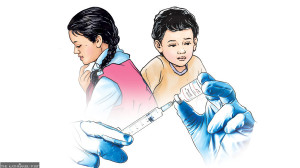Columns
What is liberal arts education?
Such education or its absence should be fathomed not in what we teach and learn but in how we teach and learn.
Chaitanya Mishra
Amid a rising clamour from politicians and others for tightly stringing together higher education and the job market, a disparate voice is trying to make itself heard. This voice emphasises that a broad-scale, multidisciplinary education and intense student engagement that promotes independent thinking and writing—and one that is topped by specialisation in a major discipline—provides the best education both for self-growth as well as job access and performance. This is the stance of those who favour the “liberal arts” mould of education. Among those in this mould in Nepal today are the neophytes: The University of Nepal and the Master’s in History and Philosophy programme of Kathmandu University. This is a step in the right direction. On the other hand, much deeper thinking is called for.
Liberal arts education is said to have begun with the Greeks 2,500 years ago and has undergone multiple transitions since. Today, it is framed either as a requirement of a common core or as a requirement that students, mostly during the first two years of college, elect a certain number of courses from physical sciences, biological sciences, social sciences and humanities. The latter two years of college are then mostly devoted to courses on the discipline(s) that a student seeks to major in. This arrangement is expected to prepare a broadly-based, as well as job-responsive education that at the same time promotes engaged citizenship.
One takeaway from the preceding is this: The nature of liberal arts education is not fixed across time and location. Nor is it bounded by disciplines. In other words, apart from an affinity to “broadness” and a move away from a narrow vocation, liberal arts education can and must constantly be reinvented. When we are translocating such education in Nepal and the present, a re-invention would be required.
In some circles, it has become a commonplace to regard the teaching and learning of philosophy, history, language, (other) humanities, social sciences, etc., as the sine qua non of liberal arts education. This take, however, is unwarranted. History and Philosophy are necessarily liberal. You can be teaching History and Philosophy, reputedly two of the foremost liberal arts disciplines, in a highly illiberal manner, such as when History is made to gloat over nationalism and Philosophy glorifies Purbiya Sabhyata/Sankriti (Eastern Civilisation/Culture). Alternatively, we could also cite very many parochial “Western” philosophical and epistemological stances, including a plethora of Eurocentric, Orientalist and Indologist strains here. The hijacking of the Greek corpus as putatively “Western” rather than West Asian or Northeast African should itself be regarded as a huge question mark.
Now, let us ask ourselves, are Physics, Chemistry, Biology and other natural sciences necessarily illiberal? Are the Copernican theory of planetary motion and the Darwinian theory of evolution, both of which challenged a god-centered universe, illiberal? If not, why do we consistently exclude these disciplines from the domain of liberal arts education? The physical and biological sciences do impose an elevated level of certainty, completeness and fixity because such sciences come with experimental designs, “laws,” more reliable explanatory theories, as well as a set of well-guarded conventions.
But no science and knowledge is a done deal. Human beings, even the vaunted physicists, cannot fathom the wholeness and complexity of the universe, not the least due to the inherently limited, although somewhat stretchable, human ability to comprehend. Immanuel Kant clarified that we do not see the world as it is, but as we are. Nearly 150 years before Kant, René Descartes told, in effect, that we do not describe the world we see but that we see the world we can describe. Further, these ideas possess an uncanny affinity with the notion of Maya that was propounded millennia ago, both in Advaita Vedanta and Buddhism. All of the above three ideas, in turn, hint at the inherently limited but therefore a never-ending and open walk to take in the pursuit of knowledge, all knowledge, including physical knowledge. There are cyclical periods of lull and upheaval, which Thomas Kuhn called periods of “normal science” and “revolutionary science”.
As such, liberal education must be taught in a way that students become aware not only of a “law” but the historical process of discovery of that “law”. In addition, teachers must cultivate the awareness among students that no “law” is final, there is no certitude, and there is a standing invitation for them to forge ahead into the unknown in an act of self-discovery. The students then become not passive recipients but engaged collaborators, corroborators and questioners of existing knowledge. To sum up, unceasing curiosity and humility are the pillars of all good education.
The crux of liberal arts education lies not in disciplines as such but in vantage points that we utilise to fathom life, society and the biological and physical worlds and in discovering how all of these are mutually linked together. In other words, liberal arts education or the absence of it, for me, should be fathomed not in what we teach and learn but in how we teach and learn.
Thus, education that is taught and learned in an open, engaged, critical, discovery-encouraging, well-rounded, and independent thinking and oral and written communication-promoting manner is liberal arts education. In addition, liberal arts education must question received knowledge, regardless of whether it flows out of god and religious doctrines, gurus, priests and mullahs, nationalism, kings, political parties and leaders, village chiefs, ethnic councils and leaders, parents, guardians, etc., and, as extension, most men, most members of the upper castes and upper classes, and so on. On the other hand, it must also question if the counterarguments and counter-politics organised by diverse categories of the rest are not merely a knee-jerk reaction to those made by the dominant groups.
Second, liberal arts education should promote reflexivity. Students and teachers should become self-reflective beings who learn, among others, through unceasing inner conversation. Third, course texts, pedagogy, etc., should be intimately linked to the daily life of the student. Each and every text must be made to speak on the daily personal and professional life that the students are leading. The students should then be called upon to engage in conversation with the texts based on their own life, other texts, etc. Texts must change the life of the student and, hopefully, vice-versa. A text and a lecture that does not change a student’s mind, ranging from the sense of one’s own life, including one’s social relations, responsibility, hopes, fears, imagination, the nature of the physical and biological world and so on, is not liberal arts education. The whole person of the student should be summoned to keep churning with ideas.
Third, liberal arts education should ensure that teachers and students come to realise that seemingly disparate components of nature, world, society and self are mutually interconnected. This, indeed, is the justification for the multidisciplinary and interdisciplinary emphasis of liberal arts education.
Fourth, liberal arts education should strive to make a social difference. Students and teachers should connect with the people and the community they are part of and attempt to contribute to social good both as part of education and as an exercise in citizenship.
Fifth, liberal arts course plans, pedagogy, institute norms and values, extracurricular activities, BIG THINK presentations, etc., all must be aimed at the thawing of frozen minds of students and all the rest in an educational institution.
Those who wish to lay down the foundations of liberal arts education need not raise the flag of their educational mould too high. Unless one is certain that one can convince students, parents, etc., about why they should buy into this new-fangled label, it is best to avoid putting “liberal arts education” on the masthead of your institution. It is far better to understate than overstate the label of liberal arts education. It is better that you tell students, parents and all the rest that you are preparing highly competent graduates in a discipline (or a set of disciplines or an emerging interdisciplinary field). You just need to make certain that the best graduates tend to come out of the liberal arts mould.
In any case, you are not teaching liberal arts as such but teaching a specific discipline (or a combination of disciplines) in a liberal-arts vein. You are free to tell the prospective student about the key advantages of teaching and learning in this specific vein. You are also free to tell them how this specific stance on knowledge gives the students at your institute a crucial advantage over graduates from other universities or institutions. You may even drop names of high-quality and familiar liberal arts colleges and universities to buttress your case.
In addition, please make it certain to translate the expression “liberal arts education” in Nepali, Newari, Maithili, Hindi and several other languages, i.e., languages that your future students and their guardians speak. If something has not been translated in a manner that is fully illuminating to your “clients,” you are not going to be able to “sell” it. If liberal arts education is something valuable, it must be amenable to specific vernacular formulations. And it must be translated not in a way that satisfies you but in a way that hits the nerves of students, parents and others. The value and utility of such education must be communicated in a way that resonates with the daily life and job prospects of students, parents, high school teachers, from where potential liberal arts students come, potential philanthropists, political and government leaders and bureaucrats.




 11.12°C Kathmandu
11.12°C Kathmandu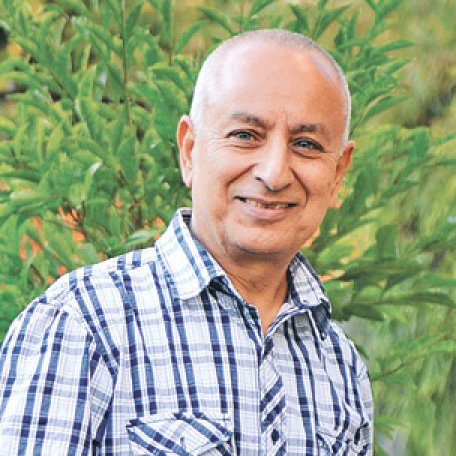
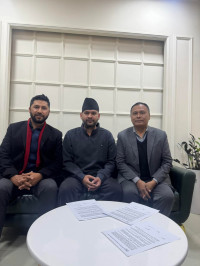
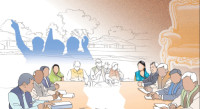
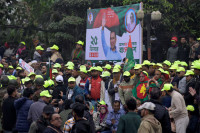

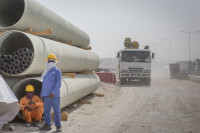

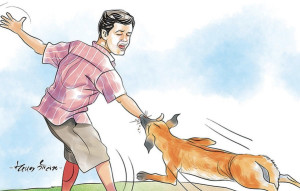






%20(1).jpg&w=300&height=200)

